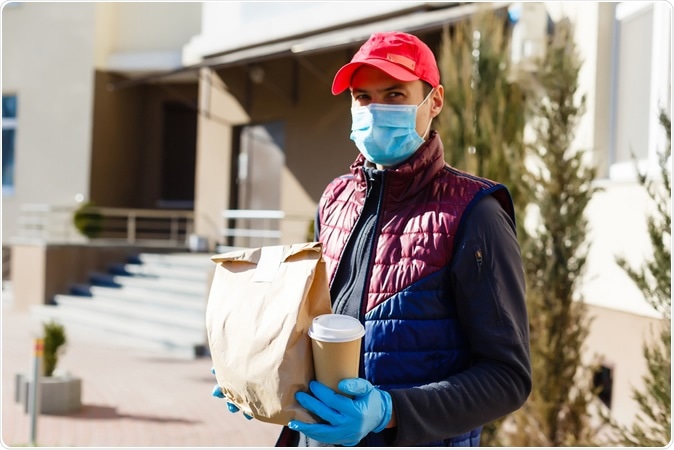A new study by researchers at the University of Cambridge, Universidad de Sevilla, and the University of Massachusetts, published on the preprint server medRxiv* in May 2020, shows that it is essential to choose a restrictive exit strategy while easing COVID-19 lockdowns, because failure to do so may lead to catastrophic results.
The currently ongoing pandemic caused by the severe acute respiratory syndrome coronavirus 2 (SARS-CoV-2) has caused immense loss of life and economic productivity. Lockdowns to varying degrees have been put in place across the world, in most affected countries. While this has more or less effectively put the brakes on the spread of the virus, it has also squeezed the life out of the production sector, leading to a sharp drop in economic growth.
The Importance of Lockdown
The current pandemic is the result of both high viral spread as well as slow action by many governments to take preventive action to block transmission pathways. However, many countries have since clamped down, restricting movement from affected zones to other places. Consequently, many countries have now reached the point of maximum infection rate or the infection curve’s inflection point. The death-time curve has also passed its peak. In such places, epidemiologists have presented predictions for the time when the infection rate is likely to plateau, at about 5% of the maximum possible death rate, and the total number of deaths by that time.
The next step, given the predicted passing of the first wave, is to decide how and when to relax lockdowns. This is especially difficult in view of the absence of an effective vaccine or therapeutic drug, despite Herculean efforts to develop them.
In other words, the exit strategy must be designed without an eye to a possible rescue mechanism by virtue of a treatment strategy. Prevention of spread and keeping the number of cases in control is the only viable way to avoid overwhelming the healthcare system with an avalanche of actively infected and critically ill patients.
Two Exit Strategies and Outcomes
The current study explores two possible routes for an exit, both from Greece. The first is based on restricting interactions between people above and below 40 years of age, as well as between people above 40 years. Younger people are free to interact with themselves.

Athens, Greece, May 6, 2020 - Closed shops in Monastiraki district during the Coronavirus lockdown. Image Credit: Theastock / Shutterstock

 This news article was a review of a preliminary scientific report that had not undergone peer-review at the time of publication. Since its initial publication, the scientific report has now been peer reviewed and accepted for publication in a Scientific Journal. Links to the preliminary and peer-reviewed reports are available in the Sources section at the bottom of this article. View Sources
This news article was a review of a preliminary scientific report that had not undergone peer-review at the time of publication. Since its initial publication, the scientific report has now been peer reviewed and accepted for publication in a Scientific Journal. Links to the preliminary and peer-reviewed reports are available in the Sources section at the bottom of this article. View Sources
In the second case, lockdown measures are relaxed nonselectively, for both older and younger people, to interact between themselves and with each other.
Using mathematical modeling, the researchers show that these routes lead in dramatically opposite directions. While the first is associated with relatively low incidences of infections as well as deaths, the second will end in disastrously high numbers of total infections and deaths.
Again, using Greece as an example, if the lockdown continues to be enforced indefinitely, there will finally be about 2,500 infections in all, with about 165 deaths. On the other hand, there is no significant difference if the young are allowed free interactions among themselves, as long as young-old and old-old interactions are strictly regulated.
For instance, if the current young-young interactions are allowed to increase fourfold, the total number of deaths and infections would be only 185 and 3,500, respectively, which is comparable to the total lockdown situation.
But if young-young, young-old, and old-old interactions are permitted to rise threefold, the predicted total number of cases and deaths is an astounding 1.3 million and 48,000, respectively.
With a fivefold increase in young-young contacts, the number of infections increases to 300,000 and deaths to 6,000 and– a significant increase but still less than the effects of the threefold increase in all interactions described earlier.
When both young and old are free to interact five times as much as currently permitted, the effect is terrifying, according to the model. The number of infections shoots up to 2.2 million and deaths to over 83,000. Thus, the second scenario is not a logical choice, according to this model.
The Magic Point of Stability
The results of the model show that if the lockdown is eased just enough to allow the number of contacts to double, whether between old and young, or between young and young, or old and old, the situation is stable. When contacts are tripled, on the other hand, catastrophic rise in the number of cases and deaths may be expected.
In other words, the researchers say, “The transition from stability to instability occurs between doubling and tripling of all contacts. Indeed, in this case, the analysis of the model provides a warning of a possible disaster: if the number of contacts of the older population increases threefold, either among themselves or with the young population, the increase of deaths and of the number of infected persons is dramatic.”
Even if young-young interactions alone are freed to occur at four times the current rate, the situation continues to be stable. However, this is not the case when fivefold; the current number of contacts are permitted to occur. A large number of deaths and infections that occur in such a situation are undesirable, but still far superior to allowing old and young to mingle at even four times the current rate.
The study is limited by the failure to understand the difference between the number of truly infected, which is represented in the model, and reported number of cases, as used in the data from Greece. To overcome the problem associated with the likely loss of cases due to non-detection, a virtual time-series has been used where the actual data is amplified by a given factor. This helps to test the veracity of the trends seen with the actual model data.
What Does the Model Imply?
The implications of this model will depend on being able to accurately identify the concept of contact when it is related to current nonpharmacological practices like the wearing of masks, frequent and proper handwashing, and respiratory hygiene. Secondly, the effects of natural factors like variations in the climate on the spread of the virus are yet to be observed.

Courier in protective mask and gloves delivers takeaway food during covid-19 pandemic lockdown. Image Credit: Andrew Angelov / Shutterstock
Nonetheless, the researchers stand by their recommendation, based upon the parameter of contact between individuals, that “policymakers should strongly recommend that people above 40 years of age continue to observe all the above measures as strictly as it was done during the full lockdown period.”
The benefit of this type of relaxation is the ability to resume productive work and, thus, the wheels of the economy while avoiding a health-related disaster. While this model is based on Greece, which has a low infection rate and mortality, it is applicable with even greater truth to other countries with higher infection and death counts.

 This news article was a review of a preliminary scientific report that had not undergone peer-review at the time of publication. Since its initial publication, the scientific report has now been peer reviewed and accepted for publication in a Scientific Journal. Links to the preliminary and peer-reviewed reports are available in the Sources section at the bottom of this article. View Sources
This news article was a review of a preliminary scientific report that had not undergone peer-review at the time of publication. Since its initial publication, the scientific report has now been peer reviewed and accepted for publication in a Scientific Journal. Links to the preliminary and peer-reviewed reports are available in the Sources section at the bottom of this article. View Sources